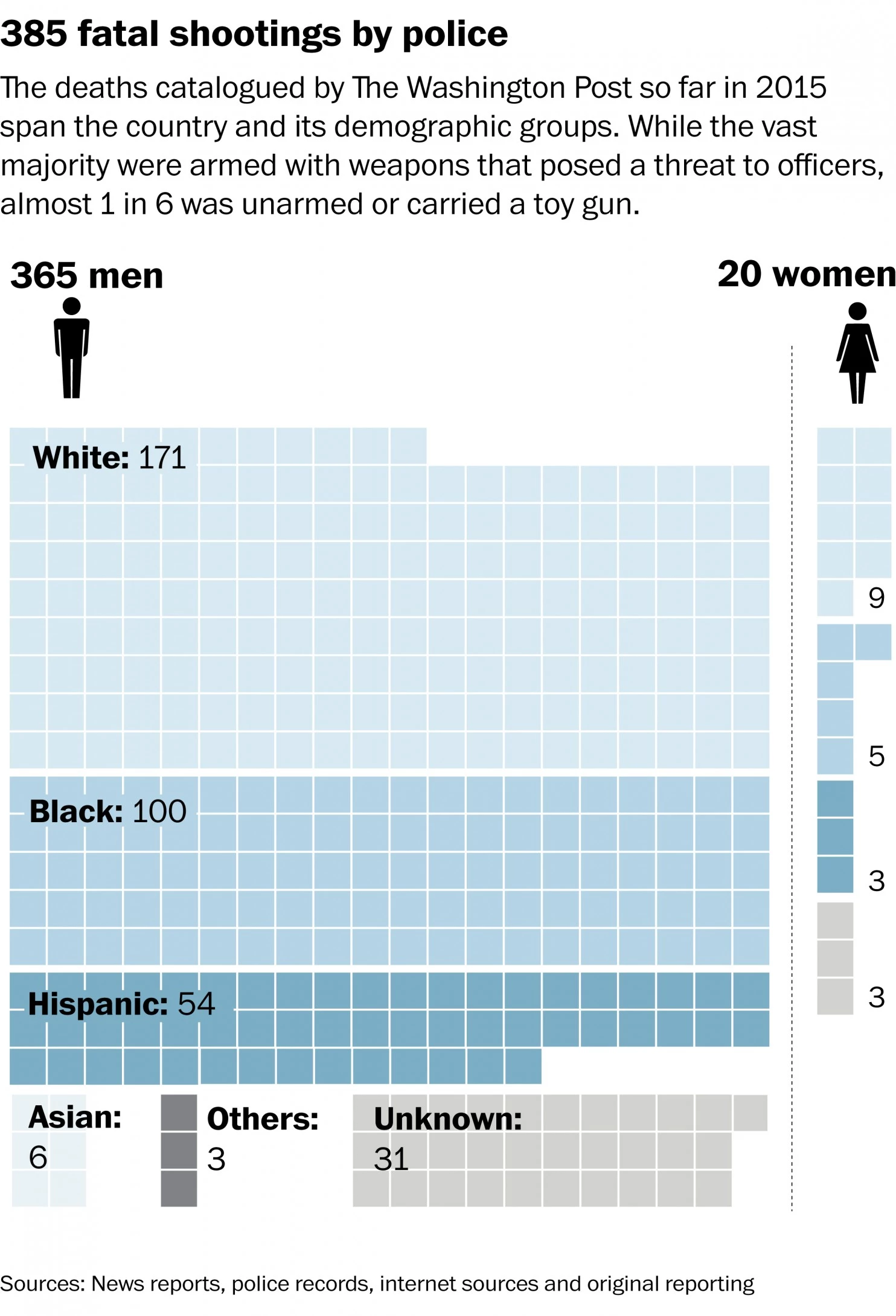385 people through five months is basically two people per day getting killed by a police officer somewhere in America, which is twice the rate of the past decade. That’s not good.
Before you think it’s all “white cop vs. black, unarmed offender” — the stories that rise to 24/7 news cycle status (sometimes) — take a gander at this.
Here’s one chart of note:
So, there’s actually been more white people shot.
But… and this is a rather massive “but:”
About half the victims were white, half minority. But the demographics shifted sharply among the unarmed victims, two-thirds of whom were black or Hispanic. Overall, blacks were killed at three times the rate of whites or other minorities when adjusting by the population of the census tracts where the shootings occurred.
Now consult this chart:
“Unarmed” as 49 is a better number than 385, but that’s still about 10 fatal shootings of unarmed people per month in America — and you’d assume probably 7 of those 10 are African-Americans. If you add “toy weapon” because that’s essentially unarmed, you’re looking at 12-13 fatal shootings of unarmed people per month in America. 12-13 isn’t a huge number — if you told your boss 12 things happened and he wanted 100, he’d be disappointed in you — but we’re talking about the end of someone’s life when they theoretically posed no real threat to the officer (you could argue there was a perception of threat in the 13 “toy weapon” group, but still).
This part is also important, because it sheds some light on why and how these incidents often come about:
The Post analysis also sheds light on the situations that most commonly gave rise to fatal shootings. About half of the time, police were responding to people seeking help with domestic disturbances and other complex social situations: A homeless person behaving erratically. A boyfriend threatening violence. A son trying to kill himself.
Read that one part: complex social situations. Indeed. Then the question becomes: Are cops really trained in the best ways to handle those dynamics? I’m sure they theoretically are, but if they totally were, would these things keep happening?
And then, of course, there’s this:
“These shootings are grossly underreported,” said Jim Bueermann, a former police chief and president of the Washington-based Police Foundation, a nonprofit organization dedicated to improving law enforcement. “We are never going to reduce the number of police shootings if we don’t begin to accurately track this information.”
So that 385 number probably isn’t even right — it’s probably somewhere between 400 and 500.
What do you think about police violence, and/or can we do anything about it?



I looked into this a while back, and your stats don’t incorporate two significant, and to a large extent correlating factors: mental illness and homelessness, which complicates the racial breakdown you have here, but establishes an important pattern. A huge number of the people shot by police are socially marginalized, not just by race, but by other factors too. Often people killed by police are people with very little social standing or influence.
They’re not just socially disempowered and often ostracized, they’re also part of a culture of fear – which is quite possibly a contributing factor in the shootings. It’s not unreasonable to assume that the vast majority of cops don’t have a hidden agenda for murder; but they are part of a culture that construes certain groups – black men, drug addicts, the homeless, the mentally ill – as unpredictable and dangerous.
Complex social situations indeed.